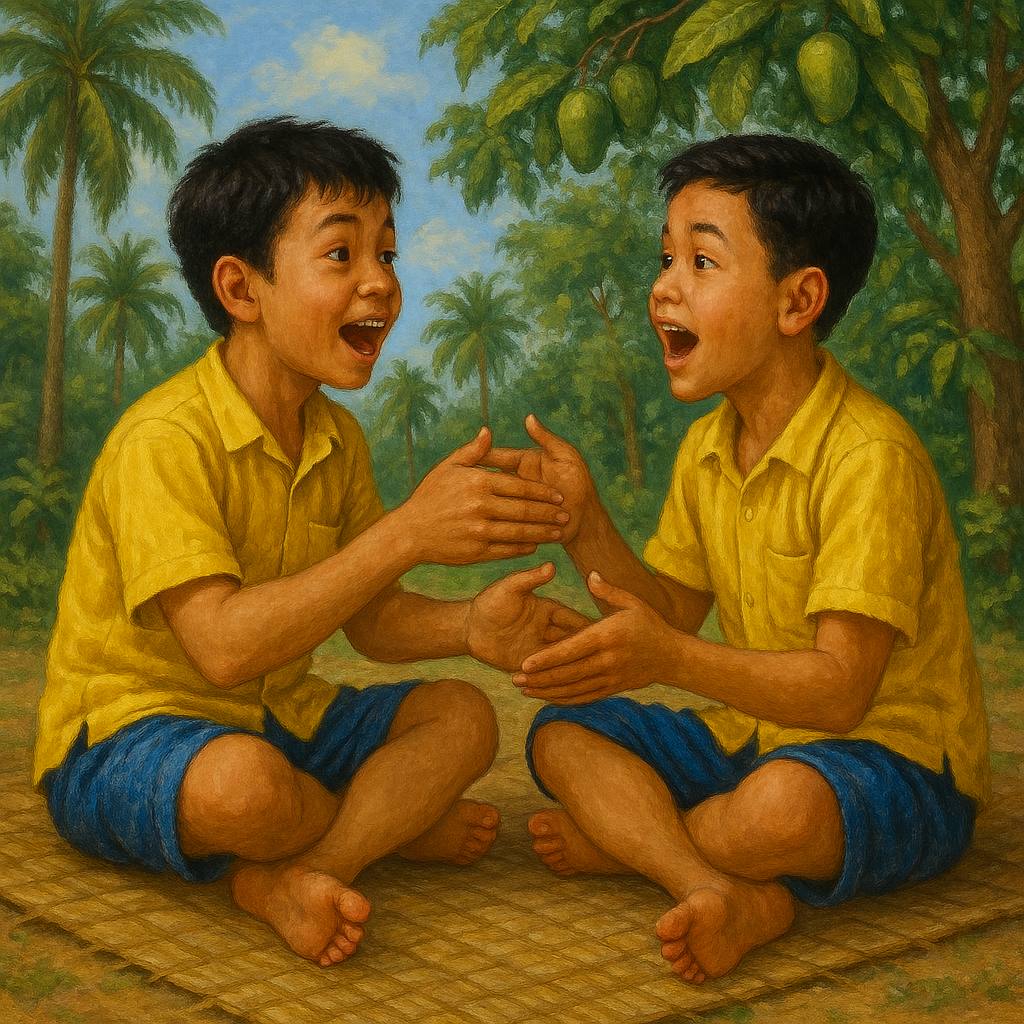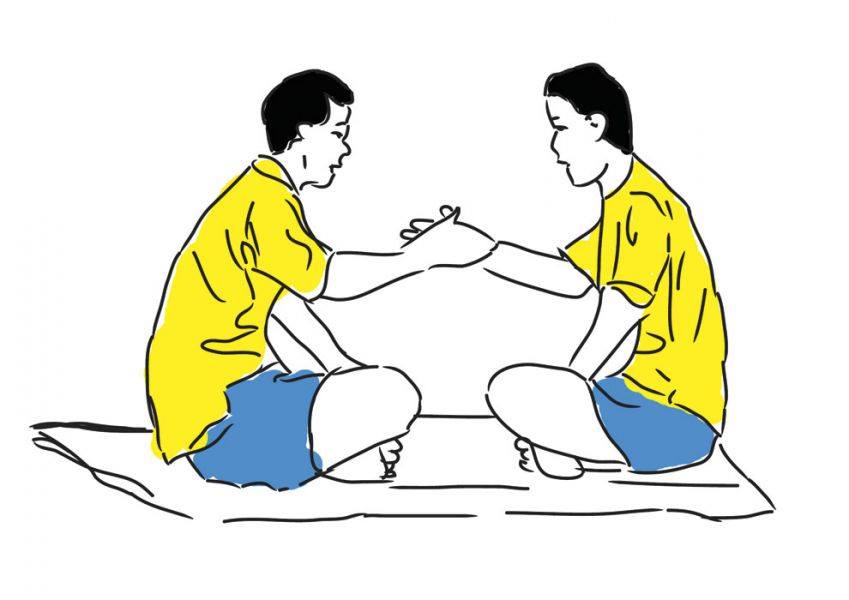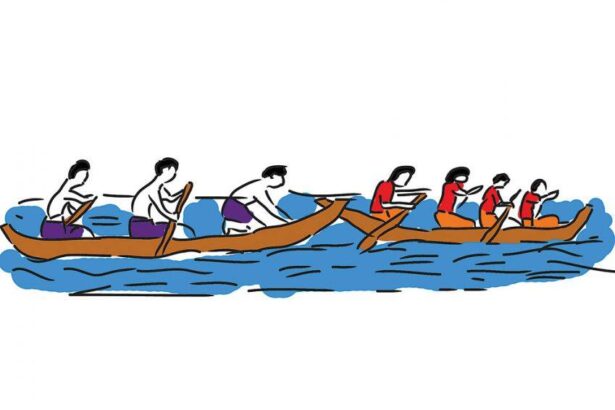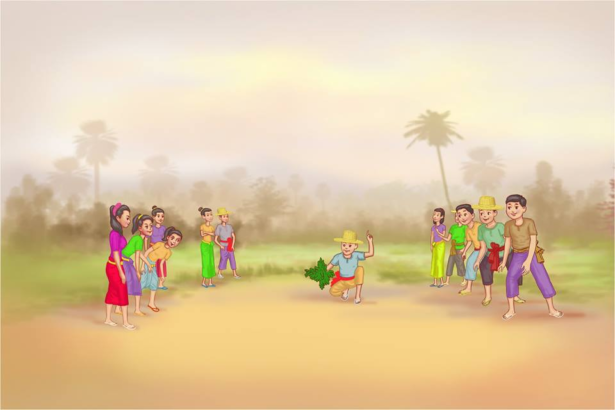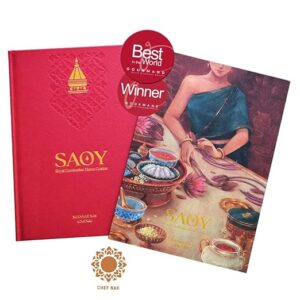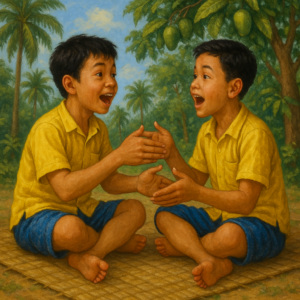
Our ancestors have left behind many folk games for future generations to play during various festivals to create fun and increase mutual relationships. There are many Khmer folk games such as the King Game (Sdach Jang), Teanh Proat, Leak Kon Saeng, Choul Chhoung, Jarb Kon Klaeng Game, etc.
Among all these games, Kuos Po Phleak “ល្បែងគោះពព្លាក់” is a kind of game played by all ages of Cambodian during the day time, specifically in wedding ceremony and other ceremonies, the Khmer New Year or free time. This game can play both male and female.
How to Play
The way to play Kuos Po Phleak “ល្បែងគោះពព្លាក់” is that the player first sits and raises his or her hands in a salute (like greeting a teacher or a god). Then, spread both hands, open his or her mouth and extend his left hand to tap his right cheek, while his right hand taps his left cheek with a raised eyebrow and makes a three-time sound, while his head tilts up and down in rhythm.
There are five levels of the rhythm:
- Clap the hands
- Tap the cheek
- Tap the lower of the chin
- Tap the stomach
- and Tap both thighs.
This creates a beautiful musical rhythm.
After finishing the tap, the player plays the same way, but changes from tapping his cheeks to tapping his hands, tapping his chin, and tapping his stomach and thighs. Kuos Po Phleak is a game that is played by teenagers or adults, but when it comes to how to play, people today probably think of it as a game for children.
Gallery

